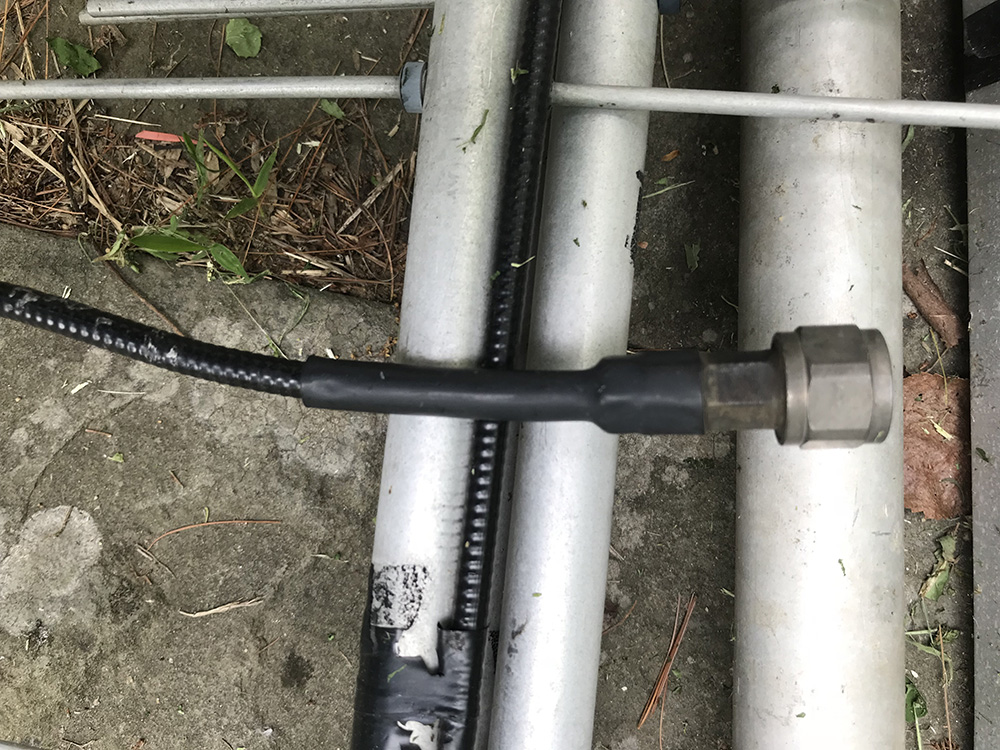I was given four long-boom 432 MHz yagis that I'm planning to mount on an H-frame to make a moonbounce array. A couple of them came with short coax phasing feedlines.
I believe that the yagis are essentially built according to a K1FO design, either similar to or identical to the antenna that was described in the ARRL Handbook for at least several years, including in the 2004 Handbook (where it is described as "A High-Performance 432-MHz Yagi" starting on page 20.63).
The driven element of each yagi uses a coax balun and a T-match, and I have a 4X power divider. So I believe that the phasing feedlines between the power divider and each of the driven elements must each have 50 ohm impedance and they must have equal lengths.
Shown below is a photo of one of those feedlines - I'm wondering whether it is likely to be Heliax. I don't see any markings on the cable jacket, but it sure looks like there's a spiral underneath the jacket. Both ends are terminated in type N connectors, and it looks like the feedlines are about 8 feet long.
I'm wondering if it might be LDF1-50 1/4" Heliax line (
http://www.repeater-builder.com/antenna/andrew/andrew-ldf1-50-spec-sheet.pdf) but maybe it's something similar but different. The cable jacket OD looks like it's a bit less than 8 mm, (7 point something mm - it was raining when I took a quick measurement so I didn't stick around to get the most accurate reading - but that would put it at about 1mm greater than a nominal 1/4" diameter).
I'd like to get either the raw material that I can use to make two phasing lines that are identical to the two that I already have, or perhaps get two already assembled ones. But maybe I'm being foolish, and instead I should just make up four identical phasing lines rather than trying to get away with only making two of them and reusing the two existing ones. I don't have much in the way of test gear for 70 cm (I've got a Bird 43 wattmeter with the appropriate slug), although I am working on building an antenna analyzer.
Has anyone assembled type N connectors on such small diameter Heliax? Would I need an expensive tool and/or jig to do it, and is it a difficult thing to do, or is it something that anyone with 'normal' ham skills can do?
Here's what the coax looks like:

 Win a FREE Membership!
Win a FREE Membership!